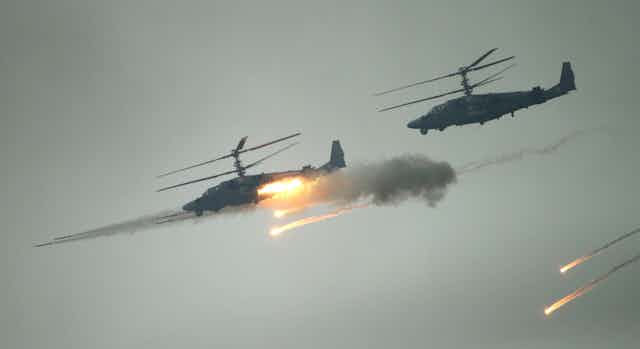This September in Europe was a tense month of military posturing and preparations. Sweden recently began a three-week war game, its largest since the Cold War. Even as it did so, across the Baltic Sea, Russian and Belarusian forces concluded the Zapad military exercises – which NATO officials called “serious preparations for a big war”.
Major war games such as these bring a risk of real conflict. But neither the Russian invasion that Russia’s neighbours fear, nor the NATO incursion implicit in the Zapad scenario, are likely events. Our research on conflict escalation suggests that the US, Russia and Europe should worry about a far riskier contingency: what if a separate crisis emerged at the same time that large numbers of troops and equipment are already deployed in the region?
A crisis could be precipitated from at least three different types of events: unattributable attacks, unilateral actions by anxious allies, and military accidents. Such dangerous situations could quickly produce unintended consequences that slip Russia and the West into armed confrontation.
Major cyber-attacks, such as the one that shut down Estonia’s government in 2007, could be particularly dangerous during an ongoing military exercise. Russia’s use of so-called hybrid warfare in Ukraine have fuelled NATO fears that a Russian military attack might be presaged by offensive actions against information systems, while Russian military planners now assume “information wars” will be part of the initial phase of every conflict.
NATO members agreed in 2016 that a cyber-attack could trigger Article 5, the alliance’s mutual defence clause, just as a conventional military assault would. But attributing cyber-attacks is very difficult; just consider last year’s crowd-sourced denial-of-service attack against Greece’s national bank by the hacktivist collective Anonymous, which could not be chalked up to a single formally organised perpetrator.

It is even harder for governments to provide credible evidence that exposes offenders without compromising intelligence sources and methods. Still, allies fearing a military fait accompli like the annexation of Crimea might feel compelled to act quickly and decisively despite limited information.
On the edge
NATO takes decisions based on the unanimity of its 29 members, meaning it might be slow to respond. Nevertheless, an anxious NATO ally – assured or even emboldened by Article 5 guarantees – might take unilateral actions that it considered purely defensive.
Any such actions could turn a tense situation into a shooting war and drag the alliance into a conflict it would rather avoid. This seemed all too close to happening in 2015 when Turkey downed a Russian jet that crossed into its airspace from Syria. Fortunately, the two countries were ultimately able to patch up their relationship.
Even if military force is not used deliberately, the probability of accidents rises in proportion to the number of manoeuvring troops and military hardware. As with previous war games, Zapad 2017 involved both Russian and Belarusian forces not only conducting military manoeuvres, but perhaps even simulating attacks against European states.
These sorts of situations make close calls quite probable. Russian jets have been known to fly dangerously close to US ships – and whenever military assets come into close contact, there is a risk of unintended collisions. Information on such an event could be limited and ambivalent, at least initially, but either the US and Russia might feel compelled to initiate a rapid military response.
A major and unattributable cyber-attack, a risky action by an anxious ally or a serious military accident could each open a path to crisis and conflict between NATO and Russia, in which neither side is the clear aggressor but both have compelling reasons to use force. The players are in place – all that’s needed is a misfired starting gun.

